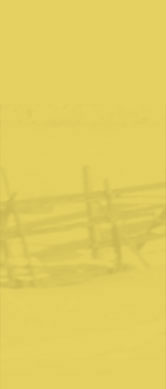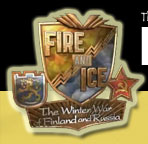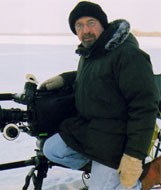

Capt. Sipovich
Soviet
- Captain, 100th Rifle Division
Battle
of Summa, Hotinen defenses
Entire January our rifle division [the 100th Rifle Division – awarded the Order of Lenin] spent preparing for the assault on Hotinen defensive area.
Not far from the divisional command post we had a defensive area captured from the Finns, with dragon teeth, ditches and barbed wire obstacles. Small units of the division systematically learned tactics of negotiating the dragon teeth and barbed wire fences, blocking the bunkers. The training was carried out on company level, with participation of assault parties, tanks, anti-tank cannons and battle engineers.
On the battalion level intensive marksmanship [sic] practice was carried out. The troops adjusted the weapons, carried out firing exercises and grenade throwing exercises. During quiet hours classes of tactics were held.
In the meantime, our regiment, engaging in small-scale day and night combat, tried to advance as close as possible to the Finnish fortifications. We fought for every meter, trying to prepare in advance a proper position for the assault on the bunkers. At a great expense we gained hill "Axe" from the Finns, who fiercly [sic] hinged on it. The hill served a good service to the battalion, as it was situated directly in front of the largest bunker the enemy had. However, we only found this out later.
From the "Axe" hill the bunker could be mistaken for a harmless little hill. It was some 40 meters wide. All covered by snow, it did not show any signs of life. Finns bombarded positions of my battalion three to four times a day, but in these cases the small hill remained silent, not a single shot was fired from it. It remained silent when small scout parties approached it from our side. We had doubts: was this a bunker at all?
In January the regiment was ordered to carry out recconnoiccance [sic] in force during the daytime in order to unveil the enemy's system of fire in the area. For this purpose we earmarked 30 scouts, 31 battle engineers and 8 signal troops. The fire support was to be carried out by the 4th company of my battalion.
After extensive preparations the scout party led by Lt. Svekrovin went on to the mission. Crowiling and with short runs, the scouts reached the first line of barbed wire fence, and overcame it. After that they came to four lines of stone dragon teeth and 50 meters behind the dragon teeth - the barbed wire fence of five lines. The battle engineers made a passage in the barbed wire; the scout party passed through it and encountered heavy rifle, machine gun and mortar fire. Advancing further, the party discovered two bunkers. We mistakenly thought that one of them was just a small hill. This was the famous bunker No. 45, or "Millioner" bunker. This is how Finns called their strongest fortresses. I heard a story that a Finnish prisoner said that if we captured the "Millioner" bunker, the "gates of Hotinen" would lie open for us. I don't know whether the story was true, but bunker No. 45 indeed turned out to the key to Hotinen defensive area. Nearby, in some 200 meters, there was bunker No. 44.
When Lt. Svekrovin's scout party was in some 50-70 meters from the bunkers, the fire from the gunports and the trenches that connected the bunkers, intensified. The scout party started to suffer heavy losses and was ordered to withdraw. However, the scouts could not withdraw easlily, as they were pinned down by the enemy fire.
Leader of the 4th Company Lt. Grishin and its political leader Senior Politruk Fomichev, decided to attack with their company in order to distract the enemy. After the signal the company moved towards dragon teeth. Finns opened heavy fire on them. The company was pinned down.
Loss of time meant destruction of the scout party. The supporting company was required to act in the most decisive and initiative manner. If the company could reach the dragon teeth, then it could use them as cover and open fire on the enemy. Having considered this circumstance, Senior Politruk Fomichev stood up and with cry "Forward!" rushed to the dragon teeth. All his soldiers followed him. From the dragon teeth the company opened intensive fire on the Finnish trenches. The enemy fire started to abate. The scout party used this and withdrew to our lines.
The information obtained by the raid of Lt. Svekrovin was of great use to us. Further operations of our scout parties, both on battalion and regimental level, helped us to clarify the situation, and with every day it was becoming more and more clear. We found out the quantity of bunkers, their sizes, the system of fire, the nature of obstacles, location of some mine fields between the dragon teeth and at bunkers proper.
What lay in front of my battalion? To the right there was bunker No. 45 with large number of gunports and slits and to the left bunker No. 44 with two gunports. The trench between them, equipped with armour shields with rifle ports, had exits to the forest which we dubbed "Longboot". The forest was situated behind both of the bunkers. This is where the enemy's field units were situated, this is from where the artillery and mortar fire descended on us. Dragon teeth and barbed wire fences lay between my battalion and the bunkers.
For several nights in a row we had been constructing trenches in front of "Axe" hill, in some 400 meters from the bunkers. Our calculation was simple - to have a favorable position organized closer to the enemy, in order to avoid unneccessary losses during the assault. We worked during the night, protected by forward security. Before dawn the work was stopped for the day, the soldiers returned to the battalion positions, and a small security force was allocated for protection of the trenches, under command of a lieutenant.
This way, preparing for the assault, we had built two company defense
areas not far from the dragon teeth line.
All the hardships of night time guard duty fell on the 4th Company,
which stayed in dugouts on the backside of "Axe" hill.
The company was some 300 meters in front of the battalion. Finns
disturbed them by fire rather often. Besides that, when guarding
the trenches, they always had to be on high alert. We thought that
two weeks of this tension would completely exhaust people. However,
when we wanted to change them with another company before the assault,
the company commander, the political officer and the soldiers requested
that they would be left on their place, promising to complete the
mission of breaking through the defenses with honor.
So, when the regimental staff ordered my battalion to capture bunker No. 45 along with the edge of the forest and hold ground, I gave this difficult task to the 4th Company.
Before the assault we worked out a detailed plan of capturing the bunker, double checked all the coordination with attached and supporting units. All the soldiers learned about the mission. They also received explanation that when closing in with the enemy they should be as close to the creeping barrage as possible, that one should not stay at the same place for a long time, as the enemy can easily kill soldiers who are not on the move.
12:15 on February 1, 1940, artillery opened fire. Using the barrage for cover, the 4th Company occupied the trenches that we had prepared in advance. The 1st Battalion of our regiment was on the company's right flank.
Two artillery battalions took part in barrage. I had negotiated with the artillery officers in advance, that they fire on bushes that lay between us and the pillbox. In this way they managed to destroy some parts of minefields, while the shell craters served as good shelters for the infantry.
The 4th company left the trenches and started its advance. The 1st Battalion also moved ahead. The enemy showered them with hurricane fire.
On that day the 1st Battalion failed to reach any success. Having
occupied the anti-tank ditch at Sep?nmaki, the battalion stopped
under the enemy's heavy artillery fire. The two tank platoons that
were attached to the battalion were stopped by deep snow.
Despite that, the 4th Company continued its advance. The assault
direction was chosen in a way that bunker No. 45 could not execute
frontal fire on the company. This saved the company from high losses.
The company managed to negotiate the dragon teeth and barbed wire.
The battle engineers started their work. But here we made a mistake.
This can be explained by the fact that this was actually our first
experience of assault on such large pillboxes. The engineer platoon
with sleds, which carried the explosives, got stuck in the dragon
teeth and suffered casualties. Eventually the platoon had to retreat
without even clearing a passage for the tanks. This failure brought
us to the idea that one should send just a small group of engineers
in order to destroy the dragon teeth, while the other engineers with
explosives for destruction of a bunker should only advance when the
passages are ready. The load of explosives frustrates the movements
of an engineer, especially among the dragon teeth, and makes him
an easy target for the enemy.
The tanks had to make a passage in the dragon teeth by the fire of their cannons. From our point of view, this tactic should only be used in cases of emergency, as tanks, stuck in front of the dragon teeth, can be easily destroyed by anti-tank artillery fire. However, that time there were no losses. Having destroyed several dragon teeth, five tanks drove to the bunker.
By that time the 4th Company was already on top of bunker No. 45. It was supposed to advance further, to the "Longboot" forest, having left the 3rd Platoon as a blocking party at the pillbox, but suffered heavy losses and the enemy's fire did not allow it to move anywhere. Finnish artillery and mortars concentrated their fire on the "Millioner", trying to destroy the heroic company and restore the status-quo. Despite this, the company firmly held on to the bunker. From the unbelievable intensity of fire one could judge, how importtant the fortification was to the Finns.
Here is the report by Senior Politruk Fomichev, which characterizes the stoicism of the soldiers and officers. "I have 28 soldiers left in the company - Fomichev informed - request help. If there are no units available, I can do without. The remaining soldiers are no worse than a whole company." A small group of brave and heroic people tried to explode one of the gunports, but they had just a little amount of explosives, just several dozens of kilograms (the engineers had not arrived yet). The explosion did not cause too much damage to the gunport, but by stones, snow and dirt the soldiers managed to "blind" the gunports. They could hear threatening shouts from inside the pillbox. The garrison tried to escape from the pillbox through the backdoor, but Senior Politruk Fomichev with a group of soldiers was there with hand grenades at the ready.
In the meantime the Finns were quitely infiltrating to the pillbox through the trench from bunker No. 44. Apparently, they intended to destroy the remains of the company in a sudden assault and liberate the besieged garrison. Having spotted the enemy's movement in the trenches, Senior Politruk Fomichev was the first one to engage the enemy with hand grenades. Following him, the soldiers creeped up to the trenches and forced the enemy to retreat. The tanks and the machine-gun company were of a big support to our riflemen.
It grew dark. The engineers brought in the supplies neccessary for the explosion. We came to a decision to explode the bunker from the roof. The roof of the pillbox had been cleared from dirt and stones by our artillery during numerous bombardments. The soldiers laid more than one and a half tons of explosives.
Before the explosion the company withdrew to the dragon teeth. The company took cover behind the dragon teeth and in shell craters. It was just the commander of the engineer battalion comrade Korovin (now Hero of Soviet Union) who stayed at the pillbox. He was the one who lit the fuse. A thunderous explosion shook the air. But the pillbox was so big that even one and a half tons of explosives only destroyed part of it. The left part of the pillbox remained intact, having fire contact with pillbox No. 44. Immediately after the explosion the company came back to the pillbox.
My battalion received an order to continue carrying out the previously set mission. Having left the 4th Company at the pillbox No. 45, I sent my 5th Company into action. On February 2, after the dark, combat for pillbox No. 44 commenced. We carried out artillery barrage by our own artillery. All five tanks opened rapid fire on the area of bunker No. 44 and the trenches around it. All the machine guns that I had at my disposal also opened fire. The 1st platoon of the 5th Company was supposed to approach the pillbox through the trenches and "saddle" it. The platoon started its advance. Three tanks escorted them on the way, firing on the pillbox and the edge of the "Longboot" forest. The other platoons of the 5th Company followed the tanks. Tanks carried one ton of explosives on sleds. Two tanks stayed at pillbox No. 45, so that in case of it opening fire they could screen the gunports.
A short fight in trenches. Finns could not withstand our pressure and retreated to the forest. Using this, the 1st platoon approached the pillbox No. 44, "saddled" it and blocked its gunports. In order to give enemy no respite, we decided to explode the pillbox right away. Soldiers passed the explosives from hands to hands through the trenches from the tanks, which stopped in 50 meters from the pillbox. Finns fired on us from the forest, but their fire was unorganised and did not cause damage to us.
In the night the pillbox No. 44 was destroyed. Just its casemates remained intact, which Junior Lt. Stupak, commander of the 5th Company, used as his CP. Soldiers rested there from time to time.
During that night the battalion was deployed in the following manner. The 4th Company, as I had already mentioned, was located at pillbox No. 45, having direct contact with the right flank of the 5th Company, which occupied the trenches and pillbox No. 44. The mortar platoon stayed with the 4th Company, carrying out disturbing fire on the enemy. The machine gun company was employed for security on flanks and in the space between the rifle companies. I ordered the tanks to withdraw behind the pillbox No. 45, and they were ready to suppress the enemy in case of counterattack. The 6th Company remained in reserve, staying in the trenches behind the dragon teeth.
As one could expect, the fact that we captured two bunkers, and especially bunker No. 45, did not remain unnoticed by our opponent. Finns frantically concentrated reinforcements in "Longboot" forest. Later we learned from the prisoners that they had up to one infantry battalion, two machine-gun companies and a lot of artillery with mortars there.
Twice during that night Finns attempted to encircle and destroy us.
In the course of action there were even hand-to-hand engagements
in the trenches occupied by the 5th Company. Finns penetrated there
through the trenches that led to the forest. The Red Army soldiers
held firmly and attacked the Finns with bayonets. Junior Lt.t Selifontov
grabbed the enemy's hand grenades that were flying in and threw them
back. The enemy has been attacking us throughout the whole night,
but reached no success. Our heavy machine guns played an important
role in defeating the enemy's attacks. Under their fire the attacking
Finns withdrew to the forest, having suffered heavy losses.
On February 3 the Finns carried out systematic artillery and small
arms fire on the area occupied by us. The fire was so intensive that
the telephone connection between the battalion HQ and the regimental
HQ was broken almost every hour. Repairing the line under fire costed
us a lot of effort. Sometimes we had to do without wire connection
for hours. Liason soldiers died without reaching their goal. As soon
as our radio stations started to operate, Finns immediately spotted
and jammed them.
We had no other means of communication except for dogs. This is where they helped us out. I can remember, how much I neglected this means of communication during the peacetime, and I feel ashamed. The liaison dogs worked perfectly. Sometimes a dog would receive the message attached to it, would hang its head, look at you sadly, and would submissively crawl under fire, hugging the ground. None of our dogs got killed or wounded.
Through much effort and risk we managed to feed the soldiers, as Finns held all approaches to our positions under fire. Brave sergeant-majors managed to keep their soldiers supplied with food. They brought in the dry tack on sleds, pulling the latter by the rope as they crawled. A cook Kotov fed his company with hot meals, bringing it in thermoses.
It was the fourth day of unceasing fighting. During the night of
February 4 we prepared two more explosions of pillbox No. 45. Each
of the explosions required up to two tons of explosives. During that
night the pillbox No. 45 became a heap of ruins.
This is how we breached the "Gates of Hotinen".





